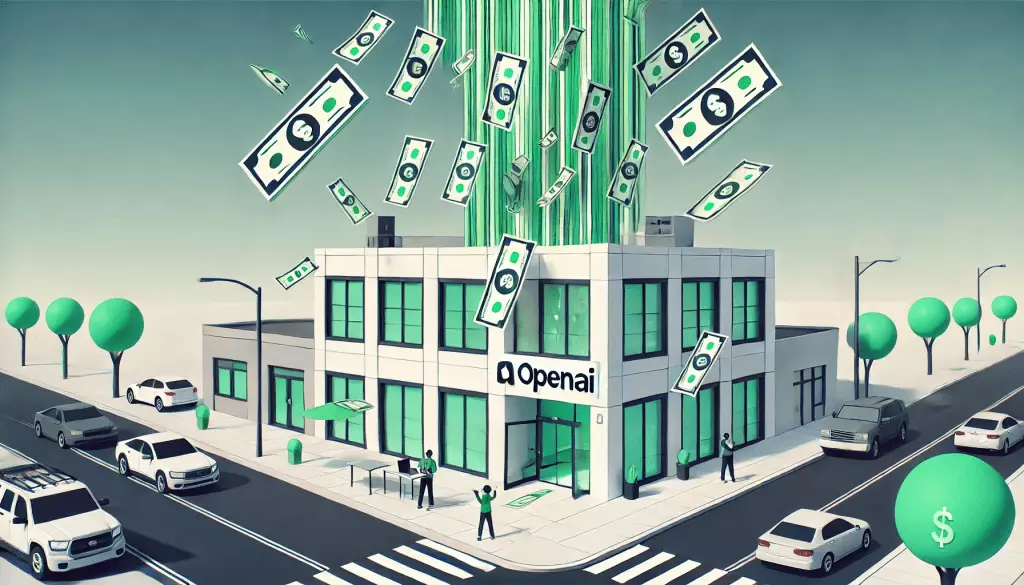OpenAI has recently announced a groundbreaking funding round, raising an astonishing $6.6 billion, which propels its total valuation to $157 billion. This notable financial milestone not only establishes OpenAI as a leading figure in the tech landscape but also marks the largest venture capital round ever recorded, eclipsing previous benchmarks. Spearheaded by Thrive Capital, this funding effort also saw significant contributions from influential players such as Nvidia and Microsoft, underscoring the immense interest and trust in OpenAI’s prospects despite the turmoil it has faced in leadership.
As OpenAI communicated through its official channels, the influx of capital will amplify its capabilities in frontier AI research, improve computational resources, and help in the development of new tools aimed at addressing complex problems. This is particularly noteworthy as the company counts more than 250 million unique weekly users of its flagship product, ChatGPT, indicating wide acceptance and usage of its technology.
However, beneath the glitz of this financial success lies a myriad of concerns from experts in the field.
Despite the jubilant announcement, notable figures in the tech community have voiced skepticism regarding OpenAI’s future. Tech public relations expert Ed Zitron, for instance, has published critiques that provoke serious consideration about OpenAI’s business model. He cites the company’s reliance on individual subscriptions to ChatGPT instead of diversified revenue streams through API usage or licensing. This, coupled with OpenAI’s acceptance of funding from SoftBank—an entity with a checkered investment history marked by failures like WeWork—raises legitimate questions about the sustainability of its profit-driven ambitions.
Furthermore, the resignation of Mira Murati, OpenAI’s former CTO, has added fuel to the fire. The decision by tech giant Apple, reputed for its rigorous investment standards, to refrain from financially backing OpenAI after evaluation only amplifies suspicion surrounding its current trajectory. Critics argue that these developments point toward potential instability within the organization, suggesting that OpenAI might not be as secure as its $157 billion valuation might suggest.
With rumors swirling about OpenAI’s need to restrict its investors from financially supporting competitors like Anthropic and Musk’s xAI, concern grows that the company feels a tangible pressure from emerging players in the AI scene. Elon Musk himself has been vocal in his disdain for OpenAI’s maneuvers, dubbing the organization “evil” in a pointed assessment on his platform X. This defensive posture raises eyebrows about OpenAI’s confidence in maintaining its competitive edge, particularly as new and capable AI models emerge from various tech entities, including Liquid AI’s innovative Liquid Foundation Models (LFMs) and powerful offerings from Google and Anthropic.
In addition, titans such as Meta and Alibaba have begun to provide impressive open-source AI models, continually intensifying the race for supremacy within the industry. OpenAI’s models may currently dominate in third-party performance benchmarks, but the rapid evolution of alternatives could erode its market position if complacency sets in.
Notably, the recent influx of $6.6 billion will likely bolster the development of new products and services for users and developers alike, ensuring stability and ongoing support in the short to medium term. Developers who build upon OpenAI’s frameworks may find renewed optimism, expecting OpenAI to continue to be a robust partner as the AI landscape evolves.
Another significant area of interest is OpenAI’s introduction of the custom GPT Store, an initiative that is seen as a critical step toward democratizing AI. While the rollout of the revenue-sharing model for creators within this ecosystem is yet to be fully realized, there is hope among GPT creators that the new funding will lead to increased financial support for innovative ideas.
As OpenAI progresses, it is crucial that it remains responsive to both financial backers and users. The balance it strikes between innovation, competition, and community engagement will ultimately dictate its future success. As we await the public release of new offerings such as the AI video model Sora, the spotlight is firmly on how OpenAI navigates its path through challenges and leverages its significant resources for long-term growth.

